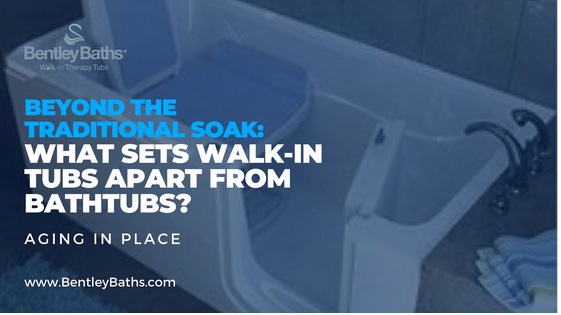5 KEY DIFFERENCES BETWEEN BATHTUB AND WALK-IN TUB.

Bathtubs and walk-in tubs are both popular options when it comes to bathing, but they differ in numerous ways. By examining their key differences, we can gain a better understanding of which option suits our individual needs and preferences. This essay aims to explore five significant distinctions between bathtubs and walk-in tubs.
- First and foremost, accessibility is a primary factor to consider. While traditional bathtubs possess a higher rim, making it relatively challenging for individuals with mobility issues to enter and exit, walk-in tubs are designed with a lower threshold that facilitates easy access. This feature makes walk-in tubs particularly suitable for elderly individuals or those with physical disabilities, promoting independence and reducing the risk of falls or injuries.
- In terms of safety features, walk-in tubs surpass traditional bathtubs. With their built-in safety bars, slip-resistant flooring, and seats, walk-in tubs provide a secure and comfortable bathing experience. These features are absent in conventional bathtubs, posing potential dangers, especially to individuals with limited mobility. Thus, walk-in tubs are an ideal choice for those who prioritize safety and peace of mind during bathing.
- Another significant difference lies in the therapeutic benefits that walk-in tubs offer. These tubs are equipped with hydrotherapy and aerotherapy features, such as whirlpool systems and air jets, that provide therapeutic massages and relaxation. In contrast, conventional bathtubs lack these features, limiting their ability to provide similar benefits. Therefore, for individuals looking for a spa-like experience or to ease muscle soreness, walk-in tubs offer effective therapeutic advantages.
- Size and space requirements also differ. Traditional bathtubs tend to take up more space and may not be suitable for smaller bathrooms with limited dimensions. On the other hand, walk-in tubs come in various sizes to accommodate different bathroom layouts, making them a versatile option suitable for both spacious and compact bathrooms. This flexibility ensures that individuals can select a walk-in tub that fits their bathroom space constraints the best.
- Lastly, maintenance and cleaning processes vary between bathtubs and walk-in tubs. Traditional bathtubs often require more time and effort to clean due to their larger size and complexity. In contrast, walk-in tubs are designed with easier maintenance in mind, with features such as self-cleaning systems and antimicrobial surfaces that inhibit mold, mildew, and other bacterial growth. These factors not only reduce the cleaning workload but also contribute to improved hygiene standards.
Comparing bathtubs and walk-in tubs reveals several significant differences. Accessibility, safety features, therapeutic benefits, size, and maintenance requirements all play essential roles in determining which option is most suitable for individual needs. Walk-in tubs provide easy access, enhanced safety features, therapeutic advantages, versatility in size and spacing, and simplified maintenance. Understanding these differences allows one to make an informed decision when selecting the ideal bathing option. By prioritizing individual requirements, individuals can choose between bathtubs and walk-in tubs to create a safer, more enjoyable, and personalized bathing experience.
Ditch the old school bathtub and make a splash with a luxurious walk-in tub!








